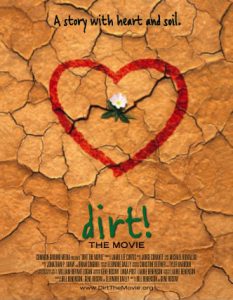By Ali Siemens (Staff Writer) – Email
 Canadian residents are lucky. Freedom of speech, free healthcare, a multicultural society, and an adventure into nature is possible, no matter what province you live in. Whether or not we live in the city or a more rural area, it’s possible to get back in touch with our roots and smell the different aromas trees and other plants have to offer.
Canadian residents are lucky. Freedom of speech, free healthcare, a multicultural society, and an adventure into nature is possible, no matter what province you live in. Whether or not we live in the city or a more rural area, it’s possible to get back in touch with our roots and smell the different aromas trees and other plants have to offer.
Specifically in British Columbia, the coniferous trees grow wildly and beautifully for all to see. Whether we admire the Douglas fir, Hemlock, Balsam Fir, or Sitka Spruce, these trees are nothing without the living dirt that aids in their growth and beauty. Sadly, the documentary, Dirt! informs its viewers that a third of the earth’s top soil has disappeared in the last hundred years.
Receiving a nomination in the 2009 Sundance Film Festival and acceptance of the best documentary award at Visions/Voices Film Festival, Dirt! grabbed the attention of UFV audience members as well.
Based off the book, Dirt: The Ecstatic Skin of the Earth, the film focuses on the connec-tion between biology, agriculture, and environment, shedding light on the intimate relationship that humans and dirt share. As an audience member, facts about dirt and its connection with our everyday life teaches that the concern with disappearing top soil is going to be detrimental in the near future and forthcoming generations.
Kids are often encouraged to go outside and play in the dirt, making mud pies, building tunnels, and learning how to gar-den. Sadly, in places like Los Angeles, the rich, nutritious dirt kids used to be encouraged to play with is disappearing under a city of asphalt, replaced by a material that is viewed as more important. All of the rich nutrients and life that is present in top soil is being destroyed for esthetic purposes.
Dirt! also draws attention to the issue of mono-crops, or farming one specific seed on acres of land instead of diversifying the crops. Monocrops give the opportunity for pests to come in and kill everything, which in turn requires pesticides to kill off the pests, which kills the soil and accelerates climate change.
A material like dirt is often overlooked and under credited for how useful and sustainable it is. Environmentalist and eco feminist, Vandana Shiva, shares her feelings in the documentary about the decaying state of the earth. If we don’t start paying attention to simple, yet complicated aspects of our planet, Shiva warns, dirt will cease to give our planet life. The fact of the matter is our earth will not live its full life if we don’t start respecting its skin, dirt.
The film is inspiring and motivational, sharing ideas and dreams about how our planet can become more sustainable. When viewing the film, the audience can see how a fundamental part of the ground we walk on can change and influence the lives of many; we start to question why we are working so hard at destroying it.
A story is shared in the film about a forest fire, all of the animals big and small standing outside the travesty, watch their home burn to the ground. A hummingbird works at bringing one drop of water at a time to try and put the fire out. As students, we can be compared to the hummingbird; our drop of water is small, and not always as effective as the big corporations. But in the story, when the hummingbird is mocked by the other larger animals, it replies with, “I’m doing the best I can.” Although we can’t always make a big difference, we can make a small difference. Dirt! inspires and teaches its viewers that it is not impossible to make change, even if the steps are small.
Our roots are here now, but with the continual dismissal of the importance of the land, our Garden of Eden will continue to die. Change is possible, and Dirt! offers easy and inspiring tips at how to become an activist in our own homes. Be a hummingbird.


